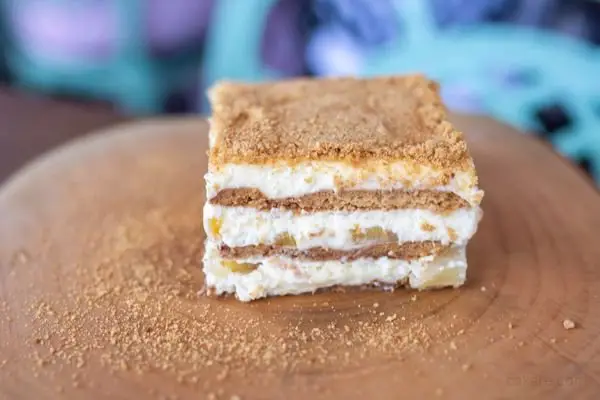Float Cake, also known as Kasutera Cake or Castella Cake, is a type of sponge cake that originated in Japan during the Edo period (1603-1868).
It was originally introduced to Japan by the Portuguese merchants who used to trade with Japan during the 16th century. The Japanese people quickly fell in love with the cake, and it soon became a popular delicacy.

The History of Float Cake:
The history of Float Cake can be traced back to the mid-16th century when the Portuguese first arrived in Japan. They brought with them a type of cake that was made with sugar, eggs, and flour. The Japanese people were intrigued by this new dessert and started experimenting with it. They added their own twist to the recipe by using local ingredients such as honey, mirin, and soy sauce.
However, the cake that we know today as Float Cake was first introduced in the Nagasaki Prefecture in the early 20th century. A Japanese confectioner named Fujiya started making the cake using a special technique that involved beating the eggs and sugar until they became thick and creamy. This gave the cake a soft and fluffy texture that was not seen in other cakes at that time.
Ingredients of Float Cake:
The traditional recipe for Float Cake only uses four ingredients – eggs, sugar, flour, and honey. However, modern variations of the cake use additional ingredients such as butter, milk, and baking powder. Here are the ingredients and measurements needed to make a traditional Japanese Float Cake:
- 6 eggs
- 200g sugar
- 200g flour
- 2 tablespoons honey
How to make Float Cake:
- Preheat your oven to 180°C.
- Beat the eggs and sugar in a bowl until they become thick and creamy.
- Sift in the flour and gently fold it into the egg mixture.
- Add the honey and mix until everything is well combined.
- Pour the batter into a baking tray lined with baking paper.
- Bake for 25-30 minutes or until the cake is golden brown and cooked through.
- Remove the cake from the oven and let it cool before slicing and serving.
Why is Float Cake so popular?
Float Cake has become popular in Japan and around the world for many reasons. Here are some of the reasons why it has become so popular:
- Soft and fluffy texture: The unique texture of Float Cake sets it apart from other cakes. The cake is soft, moist, and has a delicate crumb that melts in your mouth.
- Health benefits: Unlike other cakes that are high in fat and sugar, Float Cake is a healthier option. It is low in fat and calories, making it a guilt-free dessert option.
- Versatility: Float Cake can be enjoyed in many different ways. It can be served plain, with a dusting of powdered sugar, or with a dollop of whipped cream and fresh fruit. It can also be used as a base for other desserts such as trifle or tiramisu.
Frequently Asked Questions
The unique technique used to make Float Cake results in a softer and fluffier texture compared to other sponge cakes.
Yes, you can omit the honey and still make a delicious Float Cake.
Float Cake can be stored in an airtight container at room temperature for up to 3 days.
Conclusion
The History of Float Cake is a fascinating tale of how a Portuguese dessert became a beloved Japanese delicacy. The unique technique used to make this cake gives it a soft and fluffy texture that is hard to resist. Its versatility and health benefits make it a popular dessert option in Japan and around the world. If you haven’t tried Float Cake yet, you are missing out on a delicious treat that is sure to satisfy your sweet tooth.
